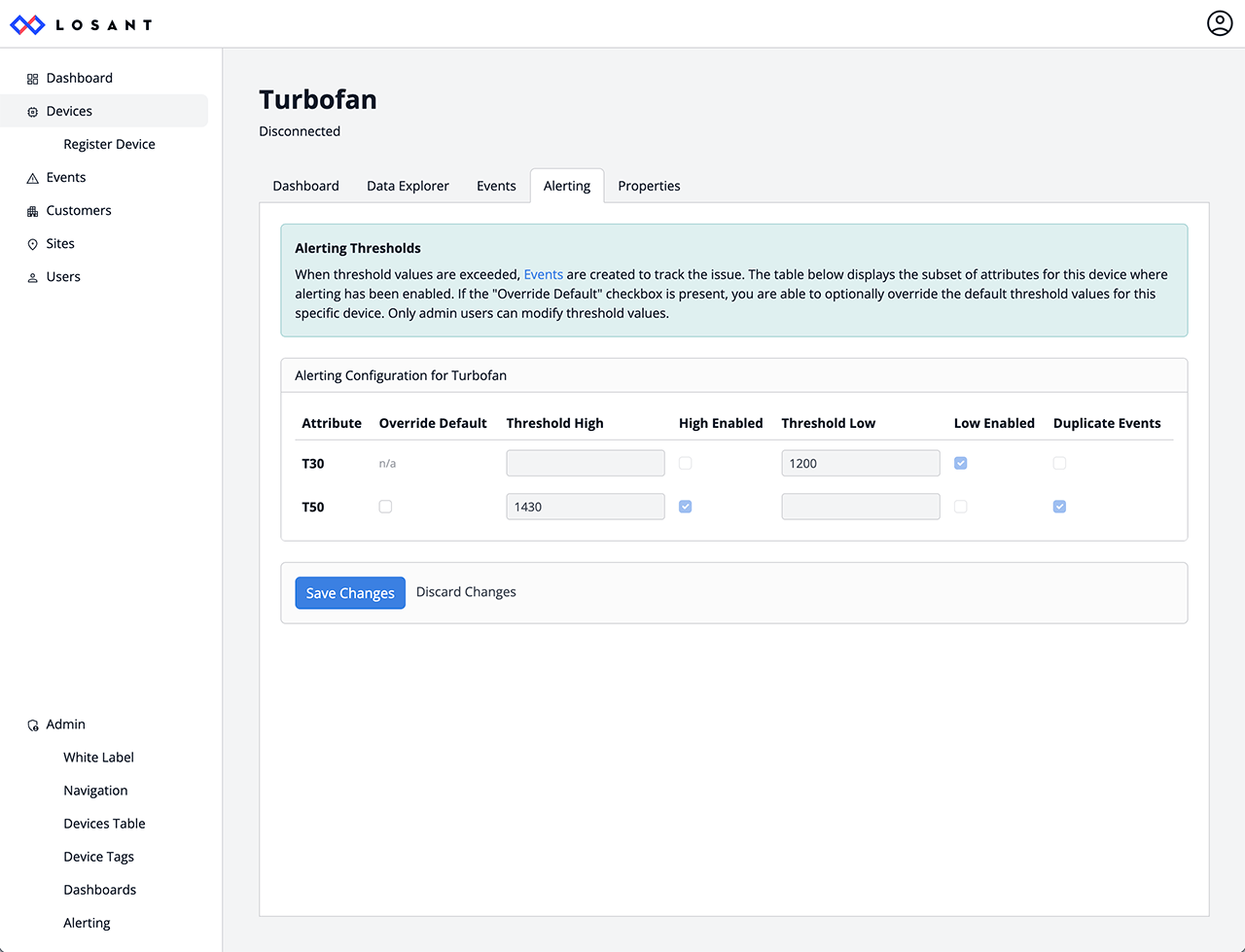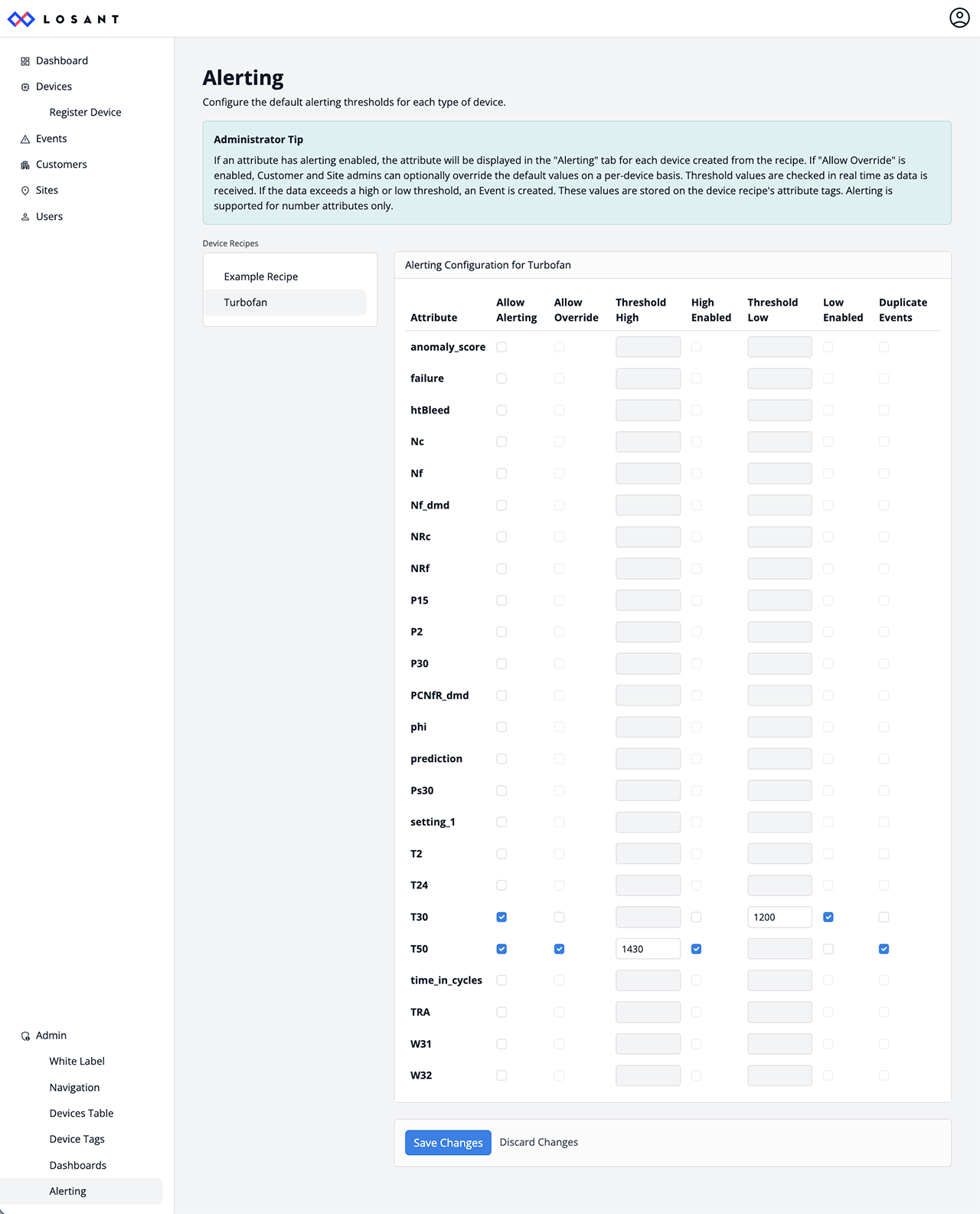The Connected Product Foundation (CPF) was released late last year and has quickly become a popular way for our customers to develop their own, customer-facing, IoT products and services.
Today's update delivers major new functionality to the CPF: automatic threshold monitoring and alerting. This feature allows you and your customers to define alerting thresholds directly through the CPF's branded user interface. When a device reports an attribute value that exceeds a low or high threshold, an Event is automatically created.

A new "Alerting" tab is now available on the device page to display that device's alerting configuration. We've also added an Alerting Admin Page, which gives system administrators full control over which attributes are enabled for alerting and whether users can override the default threshold values.

Starting today, any application created from the Connected Product Foundation template will include the alerting functionality.
One of our primary goals at Losant is to make it as easy as possible for organizations to adopt IoT. The CPF is a major driver towards that goal. With first-class support for alerting, you can instantly deliver this functionality to your customers without writing any code or building any workflows.
If you want to learn more about the CPF and how it can accelerate your IoT initiates, please contact us.
How to Import Alerting Functionality Into Existing CPF Applications
If you created an application from the CPF template prior to this functionality, you can import just the alerting features by following these steps:
- Ensure that you have not modified the source code for any of the resources below. Any changes you made will be lost.
cpf-page-device-detailsexperience pagecpf-layoutexperience layoutCPF: Get Tenancy Levelcustom nodeCPF: Verify Rolecustom node
- Download the alerting template.
- Navigate to the "Import" tab of your application's Import / Export page.
- Select
Request an import dry run with my settings below. - For
Import Source Method, selectUpload a .zip from my computerand upload the alerting template you downloaded above. - For
Conflict Behavior, selectOverwrite the existing resource with the imported resource. - Click the
Request Dry Run Reportbutton.
- Select
- When you receive the dry run report, open it and inspect its contents.
- You should see 21 rows where 14 rows are marked as
createfor theimportResult. These are the new resources for the alerting functionality. - You should see a single
DataTablerow with theimportResultmarked asno changeand theimportResultCommentsset to "1 creatable row, 0 ignored rows, 0 conflicting rows - will replace." - If you see more than 21 rows or more than one
DataTablerow, ensure you are importing the correct zip (downloaded above) and that you're importing into the correct CPF application. Also double check that theConflict Behaviorwas set correctly.
- You should see 21 rows where 14 rows are marked as
- If the dry run looks correct, scroll back to the top of the Import/Export page and select
Proceed with the import using my provided settings. - Click the
Request Importbutton. - Once imported, enable the newly created "Alerting" application workflow.
- If you experience issues, please contact us on the Losant Forums.
